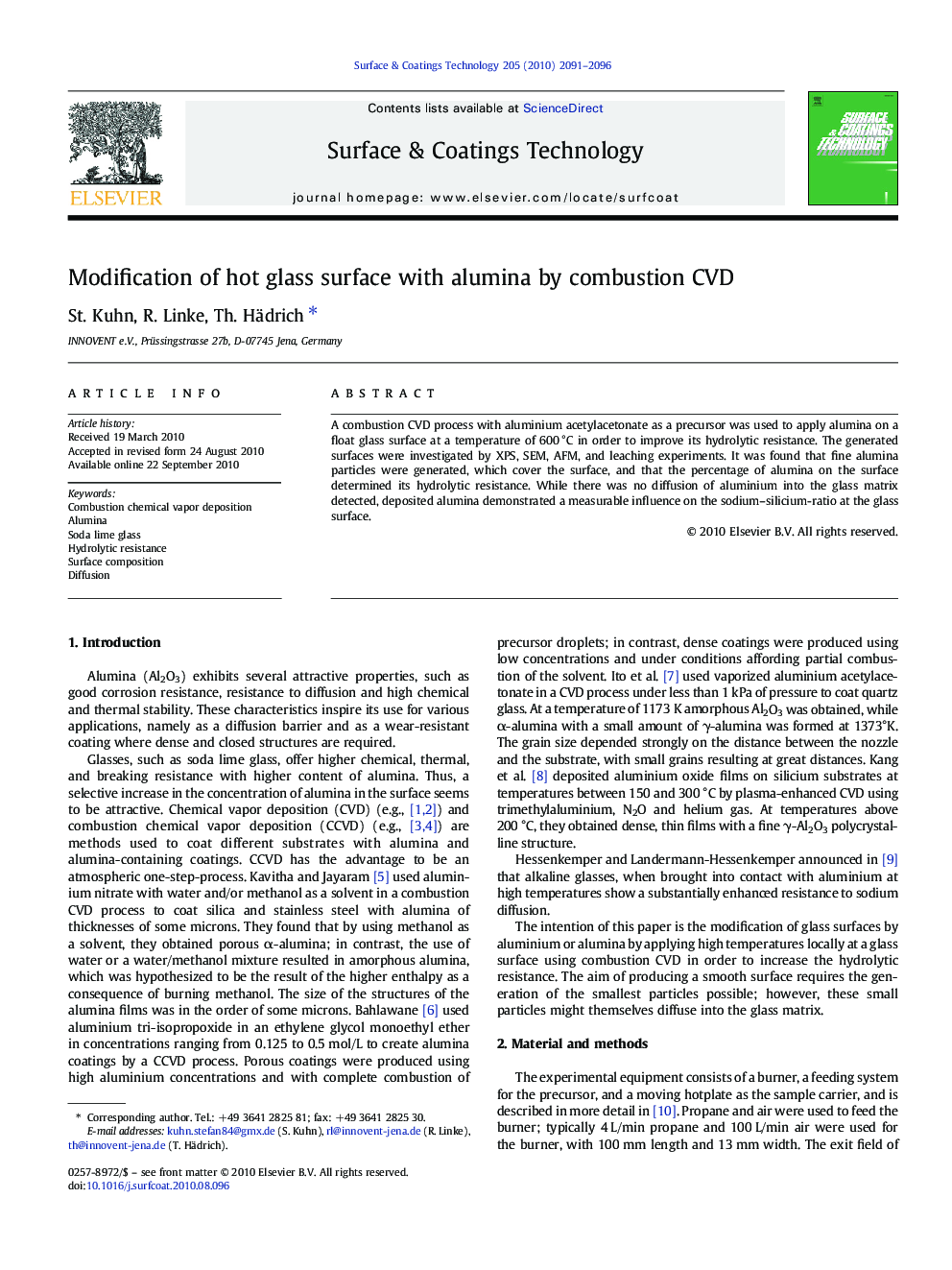| Article ID | Journal | Published Year | Pages | File Type |
|---|---|---|---|---|
| 10668638 | Surface and Coatings Technology | 2010 | 6 Pages |
Abstract
A combustion CVD process with aluminium acetylacetonate as a precursor was used to apply alumina on a float glass surface at a temperature of 600 °C in order to improve its hydrolytic resistance. The generated surfaces were investigated by XPS, SEM, AFM, and leaching experiments. It was found that fine alumina particles were generated, which cover the surface, and that the percentage of alumina on the surface determined its hydrolytic resistance. While there was no diffusion of aluminium into the glass matrix detected, deposited alumina demonstrated a measurable influence on the sodium-silicium-ratio at the glass surface.
Related Topics
Physical Sciences and Engineering
Materials Science
Nanotechnology
Authors
St. Kuhn, R. Linke, Th. Hädrich,
